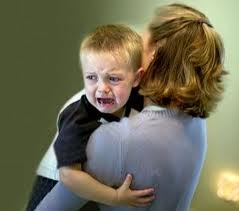Matrix 31-03-2011. Le premesse per una buona audience c’erano tutte: un pò di provocazione (avv. Bernardini De Pace), l’autorevolezza (avv. Gassani), l’equilibrio e la ragionevolezza (Timperi) e la mamma famosa (Lucarelli), ma chi ha visto la trasmissione non si aspettava certo che il ruolo da protagonista lo assumessero due ingredienti che lo chef di Matrix/Canale5 non aveva previsto: il “caso umano” (Schiavon) – il cui racconto ha spiazzato tutti e ha aperto uno squarcio insanabile tra ciò che la gente non sapeva, e ciò che adesso sa -, e le lacrime di Tiberio Timperi.
Chi aveva qualche dubbio sull’autenticità delle motivazioni del noto giornalista, impegnato sempre di più nella campagna di sensibilizzazione delle Istituzioni verso il vero affido condiviso, si è dovuto ricredere.
Durante il racconto del genitore/Schiavon, durante il quale si raccontava l’ultima telefonata intercorsa con il figlio (che mimava una segreteria telefonica, in preda alla più totale alienazione genitoriale) c’era una sola persona con le lacrime agli occhi, ed era Tiberio. A dire il vero, anche il conduttore era particolarmente scosso da quel racconto, dall’auto-analisi con cui era stato meditato per anni e dalla forza dirompente che solo la verità sa attribuire alle parole.
Chi ha vissuto un grande dolore sulla propria pelle non rimane mai freddo di fronte ad una storia così forte, anche se la sofferenza ha lasciato il posto alla ragionevolezza e alla determinazione a cambiare le cose. Le lacrime di Timperi non sono soltanto una testimonianza del dolore personale, ma il simbolo del pianto di tutti gli italiani che sbattono quotidianamente contro il muro di gomma della malagiustizia familiare.
Negli ultimi vent’anni abbiamo ascoltato spesso un utile refrain: cambiare si può. Grazie a questa consapevolezza è arrivata la legge sull’affido condiviso, che però non ha cambiato nulla nella pratica più becera dei tribunali civili. Però ha cambiato molte coscienze, e la commozione di Timperi ne rappresenta una bella fetta.
Adesso, di fronte a tanto dolore diffuso, è arrivato il momento di cambiare il refrain: cambiare si deve.
—
“IL BAMBINO DEL MERCOLEDÌ” di Gianluigi Schiavon
Il libro racconta una storia che colpisce allo stomaco. La storia è quella del piccolo Giò e del suo babbo separato, il Signor B.
Una vicenda di ordinaria e straordinaria ingiustizia, che trasforma la vita di un bambino in un percorso a ostacoli popolato di angeli e di demoni.
I primi, in questa guerra chiamata separazione, lo difendono, gli altri lo tormentano. Giò e il Signor B lottano per restare insieme. Scendono in campo anche magistrati e assistenti sociali capaci di azioni tanto efferate sulle spalle di un bambino in età da scuola materna, da riuscire a trasformare il suo rapporto con il padre in un vicolo cieco, talmente disseminato di trappole da rendere le loro visite un giallo.
Dalla notte della Vigilia di Natale, in cui il bambino fu strappato ai suoi regali e ai suoi affetti, fino agli incontri protetti, e al giorno in cui il piccolo Giò si vide improvvisamente e senza ragione negata la possibilità della consueta visita settimanale.
Assieme a tutto il resto.
E si ritrovò a protestare, e piangere, e fra le lacrime urlare: “Ma domani è mercoledì!”
Titolo : “Il bambino del mercoledì”
Autore : Gianluigi Schiavon
Editore : Giraldi Editore
Anno : 2008
Gianluigi Schiavon, nato a Padova, vive a Bologna. Giornalista de “Il Resto del Carlino”, ha lavorato anche a “La Repubblica”, “Il Gazzettino” e per varie riviste.
Per Giraldi ha pubblicato il romanzo “50 minuti. L’inganno nel cassetto”, surreale storia di un morto che continua a vedere e sentire ciò che accade intorno a lui.
[Fonte http://www.giraldieditore.it/index.php?option=com_content&view=article&am…
]



